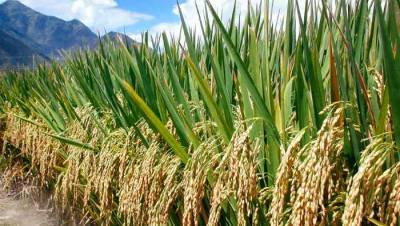NEW DELHI, 11 May 2025: Global rice markets are witnessing a phase of price stabilization, as a surge in supply from major producing countries, including India, Thailand, and Vietnam, helps ease concerns of food inflation.
Traders and analysts attribute this trend to a supply glut stemming from strong harvests and reduced export restrictions.
In recent months, rice prices had spiked due to erratic weather patterns, geopolitical tensions, and export bans. However, a combination of early monsoon forecasts in India, favorable weather in Southeast Asia, and large carryover stocks has helped restore balance in the market.
India’s Role in Easing Global Prices
India, the world’s largest exporter of rice, has significantly influenced this shift. With the India Meteorological Department predicting an early and robust monsoon this year, the sowing of kharif crops—including rice—is set to begin earlier than usual, bolstering output expectations.
Moreover, the Indian government’s calibrated export policies and sufficient buffer stock have enabled better domestic supply management while also opening windows for limited global trade.
Market Impact and Outlook
According to data from global commodities exchanges, average rice prices have fallen 5–7% in the past two weeks, following news of improved supply conditions. The benchmark Thai 5% broken rice fell to $545 per tonne, down from $580 in April.
Traders in Southeast Asia are reporting less volatility and more predictable contracts. “Buyers are feeling more confident,” said a trader from Ho Chi Minh City. “It’s a good sign after months of erratic supply and tight inventory.”
Implications for Importing Nations
Countries that rely heavily on rice imports—such as the Philippines, Nigeria, and several Middle Eastern nations—stand to benefit from the softened prices. This could translate to lower food bills, reduced inflationary pressures, and improved food security for millions.
Eyes on Weather, Policy, and Trade Flows
While current conditions are favorable, experts caution that continued stability depends on the performance of upcoming harvests, especially in India and Southeast Asia. Any weather anomalies or policy shifts, such as export curbs or changes in minimum support prices, could disrupt this equilibrium.
For now, however, the outlook is cautiously optimistic. The Food and Agriculture Organization (FAO) has revised its global rice production estimate for 2025 upward by 2%, citing robust acreage and improving irrigation prospects.
Image credit: ourworld.unu.edu




















